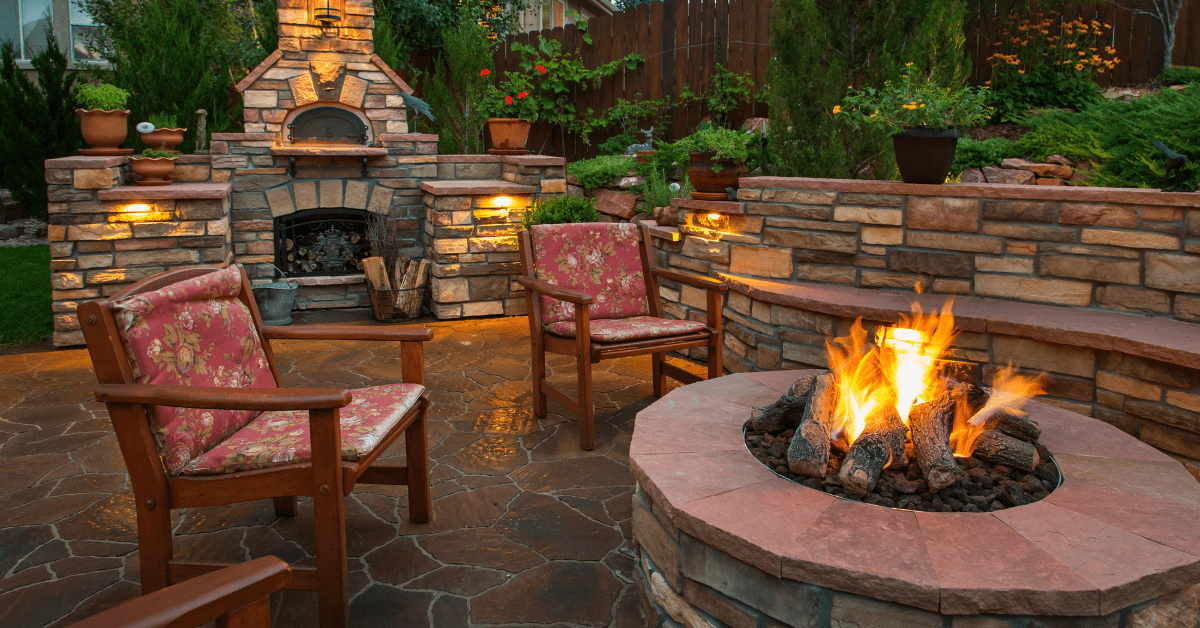
It’s been a rising trend for years now – fire features are in and show no sign of stopping. In particular, fire pits have experienced high demand thanks to the increased interest in outdoor entertaining.
Fire pits provide a natural gathering space in the landscape and also extend the season of homeowners’ outdoor living space, keeping chilly temperatures at bay.
If you’re considering adding hardscapes and specifically the installation of fire pits to your list of services, here are some of the design considerations to keep in mind.
Safety First
The first thing to be aware of when installing fire pits is your local codes and regulations. While the exact distance varies depending on regional laws, a fire pit should be at least 10 feet away from the house or any other combustible structure or surface. In some locations, certain fuel types, like traditional logs may not be permitted.
The fire pit should be built on a non-flammable surface and if your client opts for fuel types like natural gas or propane that require plumbing, permits must be pulled and inspections fulfilled for the necessary electrical and plumbing work to be done.
Material and Style
In the same vein of safety, don’t make the novice mistake of thinking any material is suitable for fire pits. Regular concrete blocks are not meant to handle high heat and can actually explode. Stones used for a traditional campfire-style fire pit can crack and splinter if you don’t know what their heat rating is.
Installing a stainless-steel interior liner with the right amount of space between the liner and the fire pit material can prevent the hardscaping materials from getting too hot. Other common materials to build fire pits out of include corten steel, powder-coated aluminum and copper.
The style of the fire pit will depend mostly on the architecture of the home, the customer and their goals/needs for the space. Fire tables can pull double duty and provide space to sit drinks while keeping guests warm. Kadai fire bowls, which originated as metal cooking bowls in India, are one style that has been growing in popularity recently.
You’ll also need to decide if you want to offer custom fire pit designs or stick to prefabricated kits. While the kits are quicker and easier to install, if the majority of your customers are looking for unique solutions it’s best to create custom fire pits.
Orientation and Height
As for the placement of the fire pit, take the time to walk your customer’s property and see which way the wind is often blowing. Placing the fire pit somewhere it can be viewed from inside the house can entice the homeowner to use it, versus hiding it in some out of the way part of the yard. If your customer has a lake view or some other appealing vista, consider placing the fire pit where they can enjoy the warm flames and take in the scenery as well.
The height of the fire pit is important as if it is too tall, homeowners won’t be able to prop their feet on the ledge. If a fire pit is too short people will have to bend and squat to get closer to the flames. A good rule of thumb for height is 12 to 14 inches tall.
Seating Options
Ask the client how they plan to use the fire pit. If they expect to host larger groups of people, you’ll want to make sure there is enough room to place ample seating. If it is for more intimate usage, designing space for at least four chairs is a good rule of thumb.
If your client opts for permanent seating, don’t build the seating more than three feet away from the pit so they can sit comfortably and still enjoy the heat from the fire. If they decide to go with movable furniture, make sure to leave plenty of space for seating to be moved closer and further from the fire. People should have plenty of room to walk around and past the fire safely.

